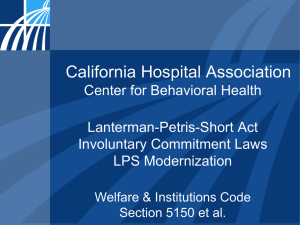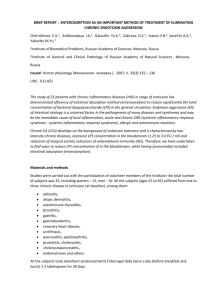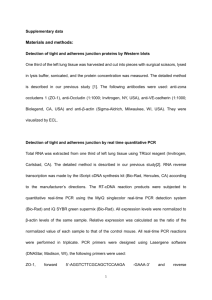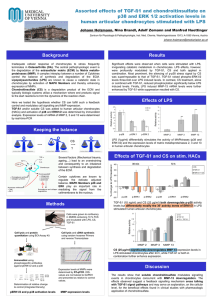LPS Presentation to the Rural Symposium 2013
advertisement
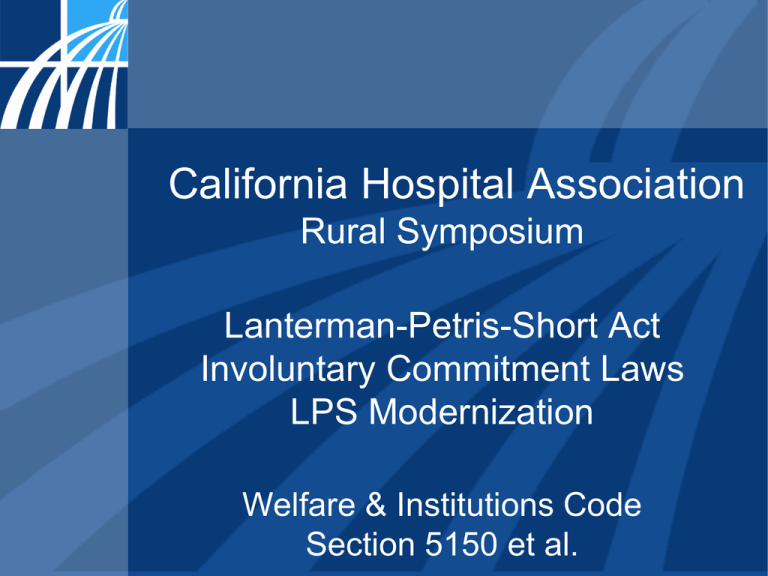
California Hospital Association Rural Symposium Lanterman-Petris-Short Act Involuntary Commitment Laws LPS Modernization Welfare & Institutions Code Section 5150 et al. CHA Modernization Objectives What We Want To Do: Improve timely mental health assessment and treatment for involuntary patients Improve access to the least restrictive level of care Reduce wait times in Emergency Departments (EDs) Reduce non-emergent mental health care visits to EDs Improve the safety level in EDs for all patients and staff Improve the coordination of services between counties, mental health plans, law enforcement, transportation providers, and providers of mental health treatment Standardize who can generate, release, or continue holds Improve uniformity in the law’s application across county lines 2 Evolution of CA Mental Health Delivery System LPS Act signed into law 45 years ago in 1967 Within 2 years of implementation, the number of involuntary patients in “state hospital” beds dropped from 18,831 to 12,671 By 1973, there were 7,000 patients remaining in the current 5 “state hospitals” California eventually closed 25,000 “state hospital” institutional beds Currently 5 “state hospitals” with 6,498 beds Only 1,930 are for providing acute psychiatric services Primarily serve individuals who are: Not guilty by reason of insanity Sexually violent predators Admitted by court order 3 Evolution of CA Mental Health Delivery System Community hospitals now provide involuntary care in 130 hospitals with 6,500 beds located in 33 of our 58 counties Federal government promised 1000 community clinics, known as State Clinics Federal government provided funding for 400 clinics Funding for clinics withdrawn; clinics close Feds no longer paid for adult (21-64) IMD Exclusion inpatient psychiatric care in dedicated psychiatric settings with more than 16 beds Radical shift in the delivery system and funding 4 Background LPS Act never anticipated: Counties with no LPS-designated facility Lengthy travel times to the LPS-designated facility Medical clearance needs/requirements of PHF’s Not enough beds leads to long wait times (often 72+ hours!) Almost no beds for patients who are young, old, or angry Changing circumstances over time that demand that process be “interrupted” or stopped 5 Hospital Concerns Significant increase in EDs becoming the only treatment provider available 24/7 EDs do not always have the capacity or capability to serve individuals with serious mental illness Federal EMTALA law requires a medical screening for all who present at a hospital. EMTALA has been the law for 25 years and trumps part of the LPS Act. Increasing numbers of individuals are taken to EDs who do not have an emergency physical or psychiatric condition Increasingly, EDs are unable to locate appropriate resources to assist those with mental illness and substance use disorder 6 Hospitals in Distress 76% increase of psych patients in their EDs EMTALA demands they can’t ignore fewer beds in CA leads to longer wait times for patient “stuck” in ED long wait time for psych assessment to arrive responsibility for sitting with the patient during the wait? 7 More Issues Crossing state lines: whose law applies; can we do it? Can crisis stabilization units be “designated” as LPS destinations for evaluation and treatment up to 24 hours (and is time credited towards 72 hours)? Clarification on when 72-hour “clock” starts/stops Immunity for judgment calls? 8 Some Problems New Legislation Could Address/Improve Excruciatingly long waits for patient Lack of crisis staff 24/7 No one to write a hold No one to transport Refusal to recognize hold-writer in destination county Refusal to accept patients without $ guarantee Demand for pick-up by “home” county after hold ends Politics over “designation” Debate over “medically clear” – EMTALA Inconsistent application of the law throughout the state Wasted time trying to create “rules” as issues arise Wasted time arguing about who pays, when “clock” starts, who is responsible, etc. 9 Or, to Sum it Up: Current law does not reflect reality and is therefore bad for patients bad for staff bad for acute care hospitals bad for County mental health bad for everyone! 10 Original Intent of LPS Act Must be preserved: 1. End inappropriate, indefinite, involuntary commitments 2. Provide prompt evaluation and treatment 3. Guarantee and protect public safety 4. Safeguard individual rights through judicial review 11 Original Intent of LPS Act 5. Protect persons with a mental illness from criminal acts 6. Provide individualized treatment, supervision, and placement for gravely disabled persons 7. Encourage the full use of existing agencies, professional personnel, and public funds 8. Prevent duplication of services and unnecessary expenditures 12 Historical Evolution 2012 – CHA allocates resources for: Legal review of entire law Data analytics of ED utilization County-by-county analysis of the current application of the law 13 CHA’s Modernization Focus Pre-Admission Focus on adult population only W&I 5150 – detain and transport W&I 5151 – assessment W&I 5152 – treatment Revise statutorily mandated 5150 form State oversight – move from DSS to DHCS in Governor’s budget Clarification – new and existing LPS Act definitions Encourage development of community-based crisis services Clarify “LPS Designation” status – move to deemed status for hospitals 14 Where to get more information www.calhospital.org includes: Psychiatric bed data LPS Act problem summary Detainment criteria LPS Designations by county 15 Contact information Sheree Kruckenberg, MPA Vice President Behavioral Health (916) 552-7576 skruckenberg@calhospital.org 16
